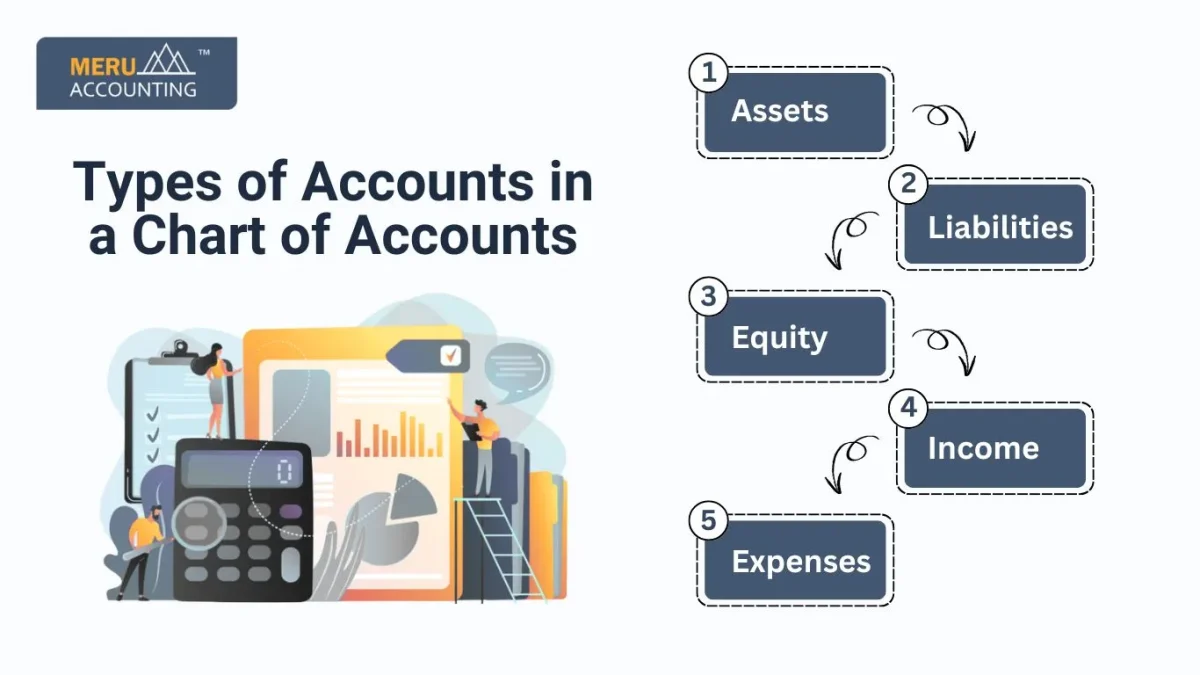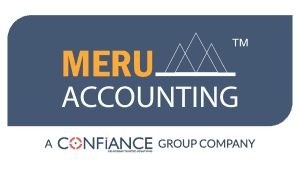Understanding the Chart of Accounts with Types and Functions for Accurate Accounting
Running a business without a clear record system is risky. Money moves daily through sales, expenses, and other activities. Without order, entries can get lost or misplaced. A chart of accounts (COA) solves this problem by creating structure. It lists all accounts and assigns them proper categories.
Charts of accounts are the backbone of accurate accounting. They make it easy to group financial data and read reports. They also help managers track expenses, income, and assets with clarity. A strong COA also makes it easier to reconcile bank statement entries. With this, leaders can trust the numbers and make wise decisions.
What is a Chart of Accounts?
- A chart of accounts is a complete list of accounts.
It organizes business transactions in a structured and clear format. - It acts like a guide for recording each transaction.
Every entry is matched with the correct account head. - It is the base for all accounting systems.
Reports, audits, and budgets depend on this basic structure. - It helps in both manual and digital accounting.
Software uses COA for automatic entry classification. - It allows accurate accounting in every transaction posted.
Mistakes are reduced because each item has a place.
Why is a Chart of Accounts Important?
- It creates a clear view of business accounts.
Owners can track performance with one quick glance. - It makes accurate accounting simple and reliable.
Each entry goes to the correct account group. - It helps in filing taxes with fewer errors.
Reports are ready when tax season arrives. - It makes audits smooth and less stressful.
Auditors can check data in proper order. - It helps to reconcile bank statement balances faster.
Bank records and books can be matched easily.
Main Functions of a Chart of Accounts
1. Organizing Accounts
- A COA sorts accounts into groups for easy use.
This avoids confusion when many entries are posted. - It ensures that money flow is tracked under the correct heads.
Nothing is left unclassified or mixed with others.
2. Supporting Accurate Accounting
- Every transaction is linked to a proper account.
This ensures correct records across all account groups. - Accurate accounting builds trust with staff and investors.
Reliable numbers make planning and reporting strong.
3. Helping to Reconcile Bank Statement
- Bank statement entries are compared with the chart of accounts records.
This helps to find missing or wrong entries. - Errors can be spotted before they cause bigger issues.
Fraud or theft can also be detected early.
4. Easy Report Creation
- A chart of accounts makes financial reports simple to prepare.
Balance sheets and profit reports come with ease. - Owners and managers save time on review work.
They can focus more on growth planning.
5. Ensuring Legal Compliance
- Proper COA helps in following tax rules.
It makes filing returns easier for all businesses. - Governments prefer businesses with correct accounting practices.
It reduces penalties and builds business credibility.
Types of Accounts in a Chart of Accounts
1. Assets
- Assets are things the business owns of value.
Examples include cash, land, and office furniture. - They show resources that help the company grow.
Assets bring benefits now and in the future.
2. Liabilities
- Liabilities are debts or dues of the company.
Loans and bills are common liability examples. - They show what the business must pay back.
Liabilities reflect the outside claims on resources.
3. Equity
- Equity is the owner’s stake in the business.
It includes investments, reserves, and earned profits. - It is calculated as assets minus total liabilities.
It shows what belongs to owners after dues.

4. Income
- Income is money earned from sales or services.
It also includes interest, rent, or other income. - It reflects the revenue source of the business.
More income means more power for future growth.
5. Expenses
- Expenses are costs paid to run the company.
Rent, salaries, and supplies fall in this list. - They reduce profits but are needed for operations.
Without them, business cannot continue its daily work.
Structure of a Chart of Accounts
Numbering System
- Every account is given a unique number tag.
It makes finding accounts faster and more organized. - Example series: 1000 for assets, 2000 for liabilities.
Each range is reserved for one specific group.
Naming System
- Accounts are given clear and simple names.
This avoids mistakes when recording new transactions. - Names like “Cash Account” or “Office Rent” work well.
They give clarity to the person posting entries.
Grouping
- Accounts are grouped under main and sub-heads.
This adds more detail for a better financial review. - For example: Travel Expense – Air or Travel Expense – Hotel.
Such grouping allows managers to track costs better.
Benefits of Using a Chart of Accounts
1. Clarity in Records
- All records are stored under the right heads.
Reports can be prepared without much delay. - Clarity helps in saving time and reducing stress.
Staff and auditors can trust the information provided.
2. Helps in Accurate Accounting
- Each transaction is recorded under the right head.
This avoids wrong postings and financial confusion. - Accurate accounting gives owners real insight into growth.
It also helps investors trust the reports shared.
3. Smooth Bank Reconciliation
- A chart of accounts helps to reconcile bank statement entries fast.
Bank data can be checked with fewer mistakes. - Errors in payments or deposits are found quickly.
This makes financial reports more reliable and true.
4. Better Control of Finances
- Owners can track money used across departments.
This avoids waste and overspending on minor costs. - Managers can cut costs and plan budgets better.
The business gains more strength in financial control.
5. Supports Growth
- Reports show which part of the business makes more profit.
Managers can focus more on areas with growth. - A chart of accounts allows planning for new projects with confidence.
Strong reporting builds a roadmap for future expansion.
Common Problems Without a Chart of Accounts
- Wrong entries often lead to mixed financial reports.
This causes confusion for owners and managers alike. - Tax filing becomes tough and full of errors.
Authorities may impose fines for bad records. - Audits take more time and incur higher extra costs.
Auditors spend long hours sorting mixed data. - Reconciling the bank statement becomes very hard to do.
Missing records increase errors in account balances. - Owners cannot measure profit or loss correctly.
This blocks good decision-making for business growth.
How to Build a Chart of Accounts
Step 1: Decide the Needs
- Small businesses need fewer accounts in the chart of accounts.
Simple heads are enough for cash and sales. - Large firms need a detailed and structured list.
They also use sub-accounts for extra clarity.
Step 2: Choose the Right Heads
- Add all five main account types to start.
This gives balance to the overall chart structure. - Ensure each head covers the needed transactions.
No transaction should be left without a place.
Step 3: Use a Number System
- Assign numbers to each account for easy use.
This helps to keep entries neat and organized. - Numbering makes report reading faster for managers.
It also saves time during audits and reviews.
Step 4: Keep it Flexible
- Businesses grow, so the COA must be updated often.
New accounts can be added when required later. - Flexibility ensures smooth accounting for the future.
This avoids confusion when new projects start.
Step 5: Test with Reconcile Bank Statement
- Match entries with the bank statement for checks.
It ensures accounts are accurate and up-to-date. - This practice reduces fraud and builds trust.
It also makes external audits easy and smooth.
Best Practices for Chart of Accounts
Keep It Simple
- Avoid too many accounts that confuse the team.
Only add accounts that are truly required. - Simplicity keeps accurate accounting easier for all.
Reports become shorter and clearer for quick review.
Be Consistent
- Use the same account names across all reports.
This avoids confusion when comparing different periods. - Consistency builds trust in accounting practices.
Owners and staff can rely on uniform reports.
Review Often
- Business needs change with time and growth.
Review chart of accounts regularly to keep it up-to-date. - Remove unused accounts from the listing.
This helps keep the chart neat and clean.
Link with Bank Data
- Use COA to reconcile bank statement entries often.
This ensures correct balances and fewer mistakes. - Linking bank data builds trust in reports.
Managers get more reliable figures for decisions.
Train the Team
- Staff must understand how COA works daily.
Training avoids errors in data entry processes. - Clear knowledge helps employees work with accuracy.
This improves overall reporting quality for the company.
Role of the Chart of Accounts in Reporting
Balance Sheet
- Assets and liabilities are sorted into the right places.
Equity shows what owners truly own in business. - A COA makes balance sheets easy to prepare.
Owners and banks can trust these reports better.
Income Statement
- Sales and expenses are clearly shown with the COA.
Profits are visible without guesswork or delay. - Accurate accounting gives confidence in income results.
Leaders can adjust budgets based on true profit.
Cash Flow Report
- Cash inflow and outflow are tracked with the COA.
This helps to reconcile the bank statement with ease. - It shows how much cash is free to use.
Businesses can plan for payments and savings better.
Chart of Accounts in Different Businesses
Small Business
- Simple COA covers sales, expenses, and cash accounts.
This avoids extra work and confusion for owners. - It helps them reconcile bank statement entries fast.
Reports are clean and ready for quick review.
Medium Business
- More sub-accounts are used for extra detail.
For example, expenses are split into marketing and payroll. - Accurate accounting helps with project tracking.
Managers get insights into which project is profitable.
Large Firms
- Large firms use a complex chart of accounts with multiple levels.
Each department may have its own COA subset. - It helps to manage audits and legal compliance.
Group reporting becomes smooth and error-free.
Digital Tools for the Chart of Accounts
- Many software tools offer built-in COA systems.
They save time in setting up accounts for use. - These tools help in accurate accounting always.
They remove errors caused by manual entries. - They also allow reconciling bank statements quickly.
Bank feeds sync with COA for daily tracking.
A chart of accounts is the foundation of clear records. It lists all accounts and puts them into structure. It helps with accurate accounting and smooth reporting. It also supports reconciling bank statement tasks with ease.
Meru Accounting offers expert help in setting up the COA. Our team ensures each account is structured properly. We also help with accurate accounting and reporting systems. With Meru Accounting, businesses can reconcile bank statement entries smoothly.
FAQs
Q1. What is a chart of accounts?
It is a structured list of accounts in business books.
Q2. Why is a chart of accounts needed?
It organizes accounts and helps with accurate accounting.
Q3. What are the five main types of accounts?
Assets, liabilities, equity, income, and expenses.
Q4. Can COA help in bank reconciliation?
Yes, it makes reconciling bank statement tasks much easier.
Q5. How is COA structured?
It uses numbering, naming, and grouping for clear order.
Q6. Do small businesses need a COA?
Yes, it helps them keep simple but correct records.
Q7. Can software create a chart of accounts?
Yes, many tools offer ready-made COA systems.








